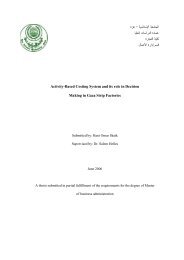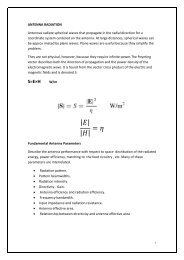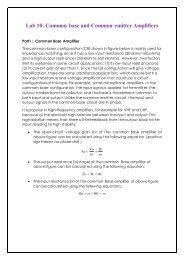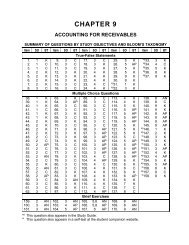A prActicAl guide Benchmarking in european Higher education
A prActicAl guide Benchmarking in european Higher education
A prActicAl guide Benchmarking in european Higher education
Create successful ePaper yourself
Turn your PDF publications into a flip-book with our unique Google optimized e-Paper software.
CONCEPTS AND PRACTICES OF BENCHMARKING<br />
He provides a second set of characteristics to describe whether these are<br />
essentially based on active research and dialogue between the participants,<br />
or are of a bureaucratic nature ma<strong>in</strong>ly based on performance criteria, codes<br />
of practices and specifications.<br />
Alstete (1995) def<strong>in</strong>ed four types of voluntary, explicit benchmark<strong>in</strong>g and he<br />
added implicit benchmark<strong>in</strong>g:<br />
• <strong>in</strong>ternational benchmark<strong>in</strong>g (with the comparison of performance of different<br />
departments),<br />
• external competitive benchmark<strong>in</strong>g (compar<strong>in</strong>g performance <strong>in</strong> key areas<br />
based on <strong>in</strong>formation from <strong>in</strong>stitutions seen as competitors),<br />
• external collaborative benchmark<strong>in</strong>g comparisons, with a larger group of<br />
<strong>in</strong>stitutions who are not immediate competitors,<br />
• external trans-<strong>in</strong>dustry (best-<strong>in</strong>-class) benchmark<strong>in</strong>g (look<strong>in</strong>g across <strong>in</strong>dustries<br />
<strong>in</strong> search of new and <strong>in</strong>novative practices).<br />
• implicit benchmark<strong>in</strong>g, which results from market pressures to provide<br />
data for government agencies and the like.<br />
UNESCO-CEPES (2007) built on the exist<strong>in</strong>g literature to dist<strong>in</strong>guish six types<br />
of benchmark<strong>in</strong>g <strong>in</strong> the higher <strong>education</strong> sector:<br />
• <strong>in</strong>ternal benchmark<strong>in</strong>g (compar<strong>in</strong>g similar programmes <strong>in</strong> different components<br />
of one higher <strong>education</strong> <strong>in</strong>stitution),<br />
• external competitive benchmark<strong>in</strong>g (compar<strong>in</strong>g performance <strong>in</strong> key areas<br />
based on <strong>in</strong>stitutions viewed as competitors),<br />
• functional benchmark<strong>in</strong>g (compar<strong>in</strong>g s<strong>in</strong>gle processes),<br />
• trans-<strong>in</strong>stitutional benchmark<strong>in</strong>g (across multiple <strong>in</strong>stitutions),<br />
• implicit benchmark<strong>in</strong>g (quasi-benchmark<strong>in</strong>g look<strong>in</strong>g at the production and<br />
publication of data/performance <strong>in</strong>dicators which can be useful for mean<strong>in</strong>gful<br />
cross-<strong>in</strong>stitutional comparative analysis; these are not voluntary but<br />
result from market pressures or coord<strong>in</strong>at<strong>in</strong>g agencies),<br />
• generic benchmark<strong>in</strong>g (look<strong>in</strong>g at basic practice process or service) and<br />
process-based benchmark<strong>in</strong>g (look<strong>in</strong>g at processes by which results are<br />
achieved).<br />
40 A Practical Guide - <strong>Benchmark<strong>in</strong>g</strong> <strong>in</strong> European <strong>Higher</strong> Education

















